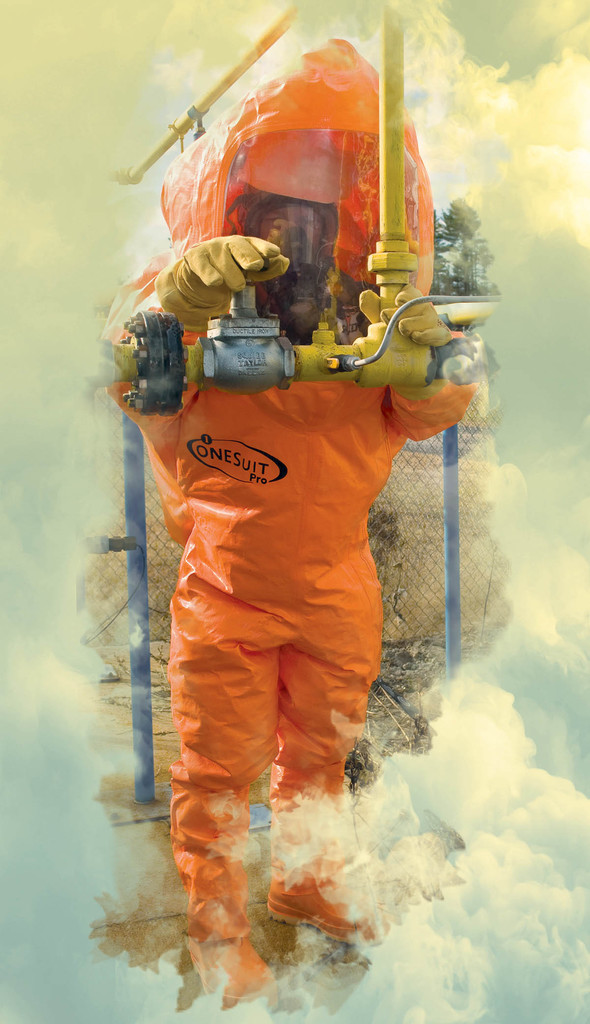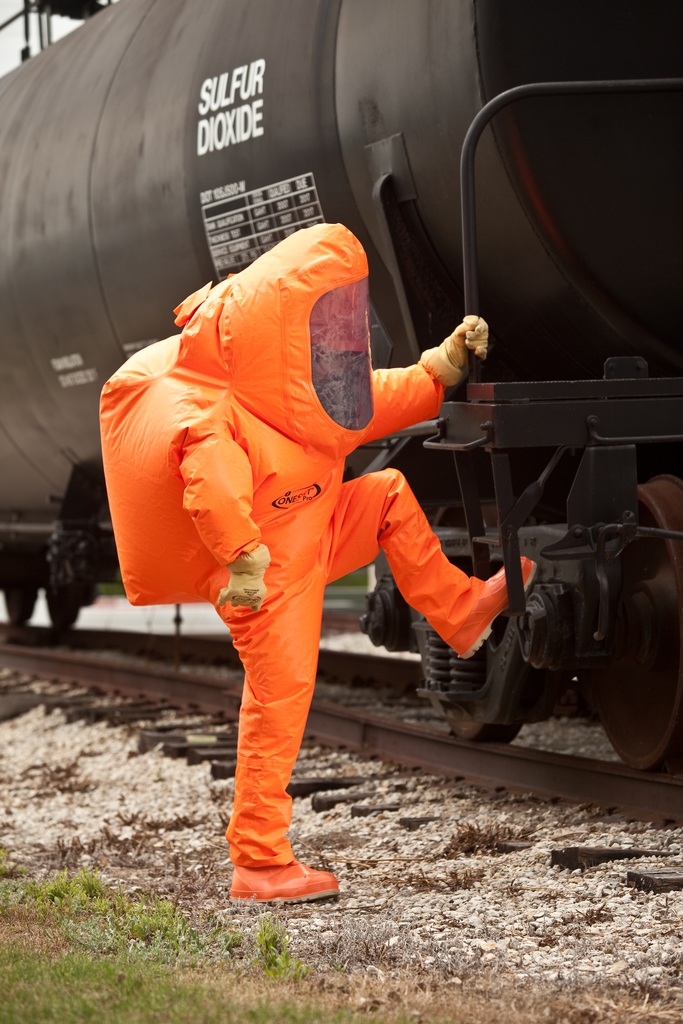What are the key regional safety standards for protective hazmat suits in flame resistance and flash fire situations?
Across Europe, the European Committee for Standardization (CEN) has put in place EN 943-2 certification. Europe’s highest safety standard EN 943-2 requires many safety tests, including flame resistance but not flash fire. The highest performance rating available for flame resistance is referred to as level 3, which consists of hazmat suit exposure to flame for up to five seconds without burning, melting or dripping. This is not a particularly strenuous requirement but many EN943-2 certified suits only meet class 2 of this test, which is just one second.
In North America, the National Fire Protection Association (NFPA) has established NFPA 1991 certification for vapour-protective ensembles used in hazardous materials emergencies. Certification includes testing for flame resistance and flash fire protection. Base flame resistance includes two exposures: one touching a flame source for 3 seconds with no ignition, and then another 12 second exposure without burning after 10 seconds, with no melting or dripping. The optional flash fire requirement testing includes exposure to a propane gas fuelled flash fire which burns for 6 to 8 seconds. The suit must not ignite as a result of exposure and must maintain a level of airtight integrity, thermal insulation and visual clarity after the flash fire exposure.
As it is optional, why should companies outfitting employees or emergency personnel pay attention to flash fire safety standards?
Flash fires can occur in situations where air is mixed with any type of fuel or highly volatile liquids usually in an enclosed or confined space.
In 1992, a flash fire broke out the Allied Colloids factory in Bradford, West Yorkshire. While no fatalities were reported, more than 1,000 workers were evacuated and 34 were treated for minor injuries. In addition, thousands of local residents were confined to their homes and nearby highways were shut down. More than 150 firefighters were needed to get the factory fire under control and were on stand-by for 18 days in case of re-ignition during cleanup.
When responding to a fire emergency, fire service personnel must be aware of the risk of fast-moving flash fires that can set what are known as "after fires”. Even a contained explosion at a pharmaceutical plant can result in potential flash fires from many of the hazardous and extremely flammable chemicals and vapours used during pharmaceutical manufacturing processes.
What type of flame resistant fabrics or materials for protective equipment are available on the market?
Providing a certain level of protection, there is flame resistant clothing made from fibres that char, but do not ignite such as Nomex and there is clothing made using fibres that have been treated with flame retardant chemicals. These flame resistant fabrics are typically found in what is called "turnout gear”, such as the fireman’s coats and trousers most of us are familiar with.
However, for extended use in challenging environments, recent advances in materials science have yielded innovative polymers that exhibit superior protective qualities. For example, fluoropolymer barrier technology, using high-performance polymer films, has resulted in gas-tight hazmat suits that not only maintain performance at high temperatures, but are also proven to be an effective barrier against hundreds of industrial chemical and warfare agents.
What factors should be kept in mind when choosing a gas-tight protective suit for employees or emergency responders?
There is one primary concern and that is the safety of the user. The first step is to identify all the potential hazards that one might face, such as flash fires. A protective suit for a chemical plant employee might differ from that of a member of a fire brigade or the requirements of specialist tank cleaning personnel.
Next, take a look at the material used in suit manufacturing. Is the suit made using advanced materials that can withstand any and all potential threats? Most importantly, check reputable safety certification standards, such as EN 943-2, including the optional test performance levels. Select suits such as Saint-Gobain’s ONESuit Pro that meet both standards and ensure the suit has third-party validation for the safety of employees or emergency responders.
Another factor to consider is mobility. Ease and range of movement in gas-tight protective suits is a major concern for emergency responders. The good news is that recent advances in materials science have resulted in light-weight single skin suits that can provide safety, comfort and mobility in hazardous situations.
Ian Hutcheson is market manager protective & fabricated systems Europe at Saint-Gobain Performance Plastics



